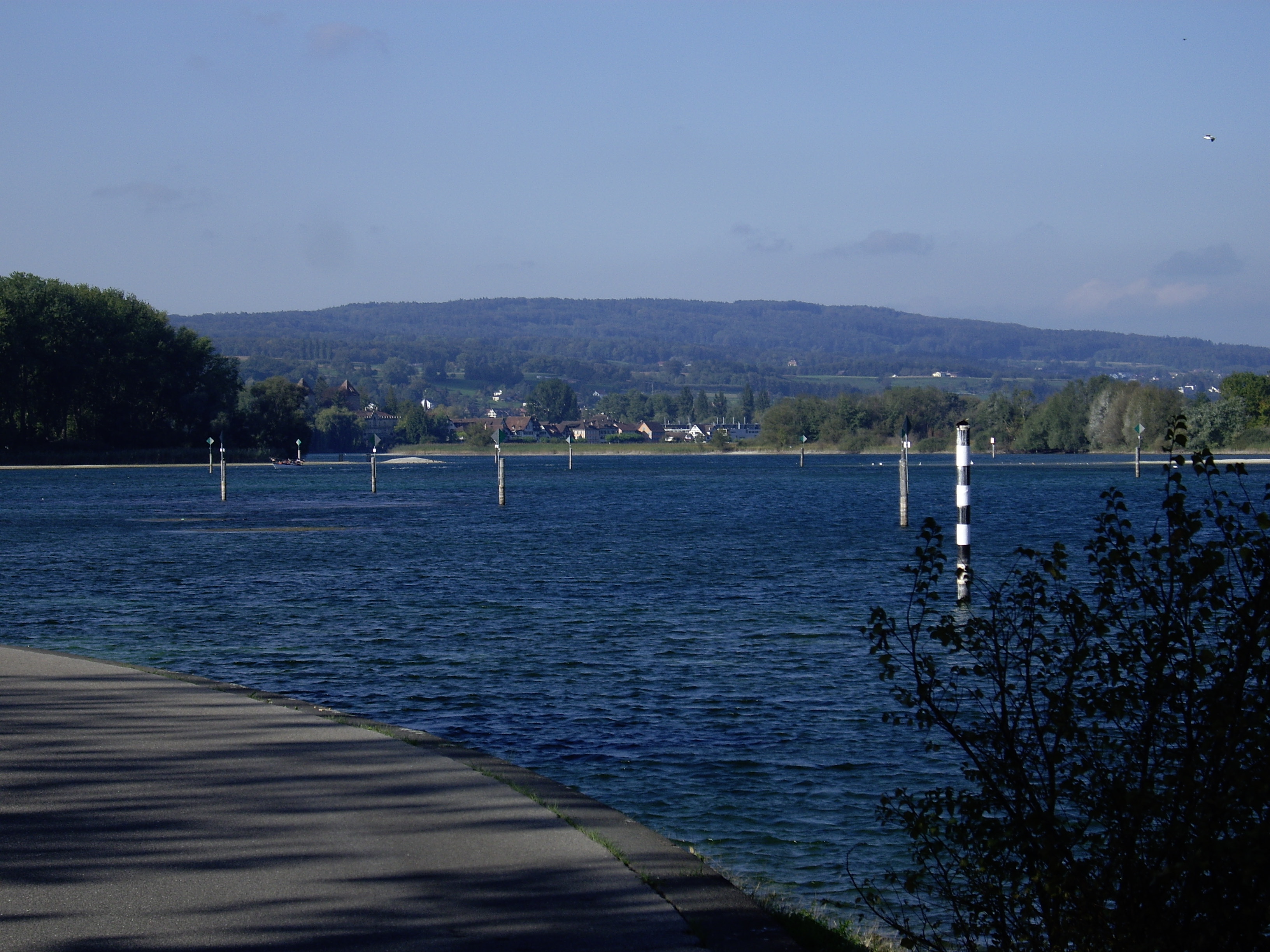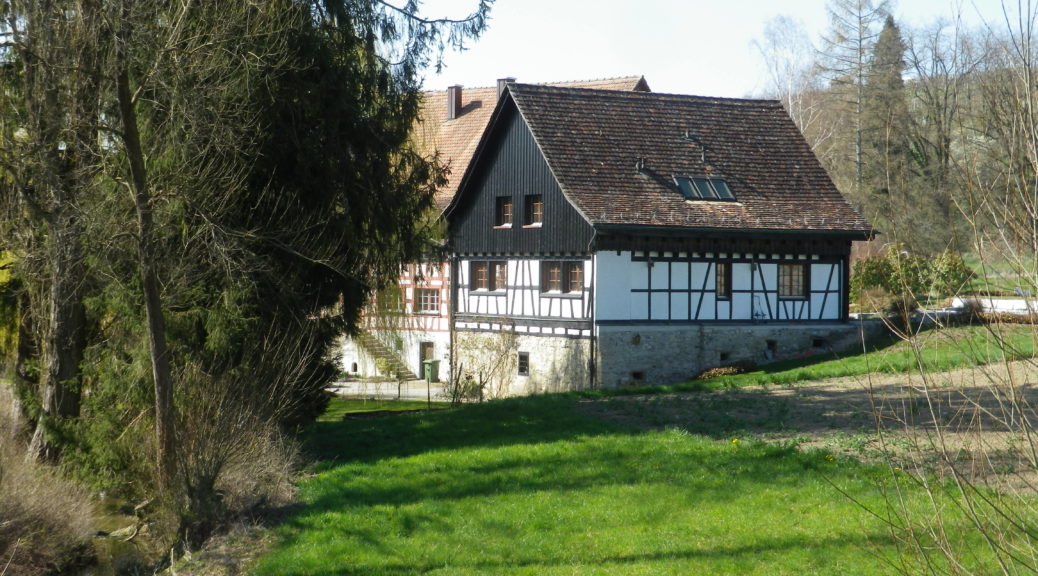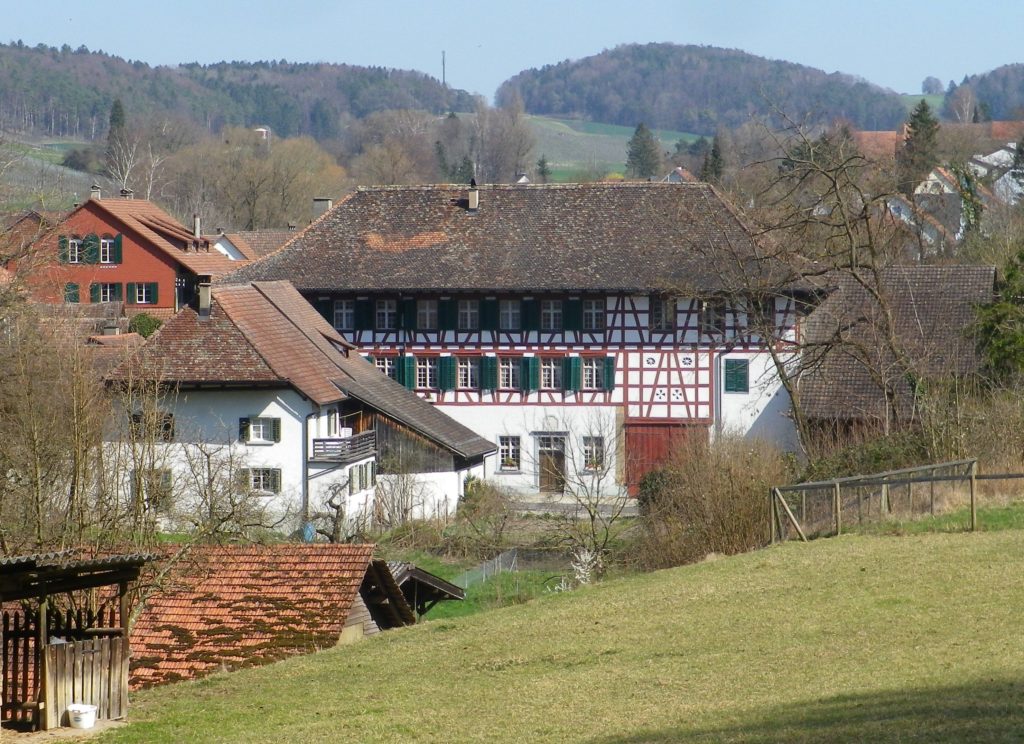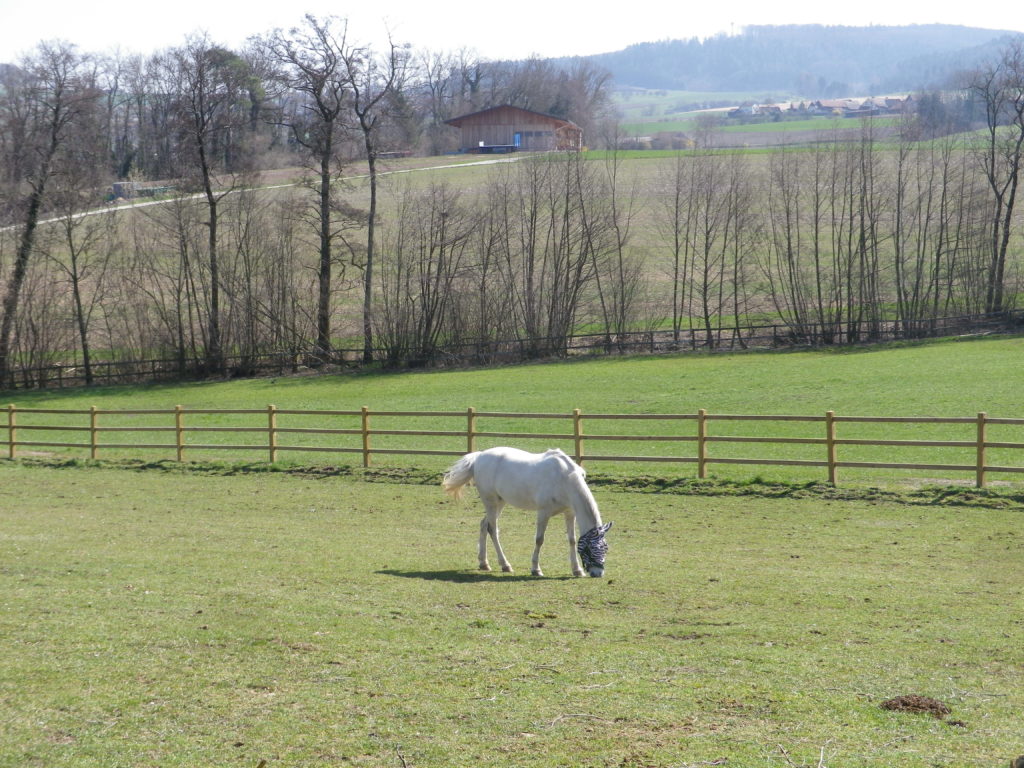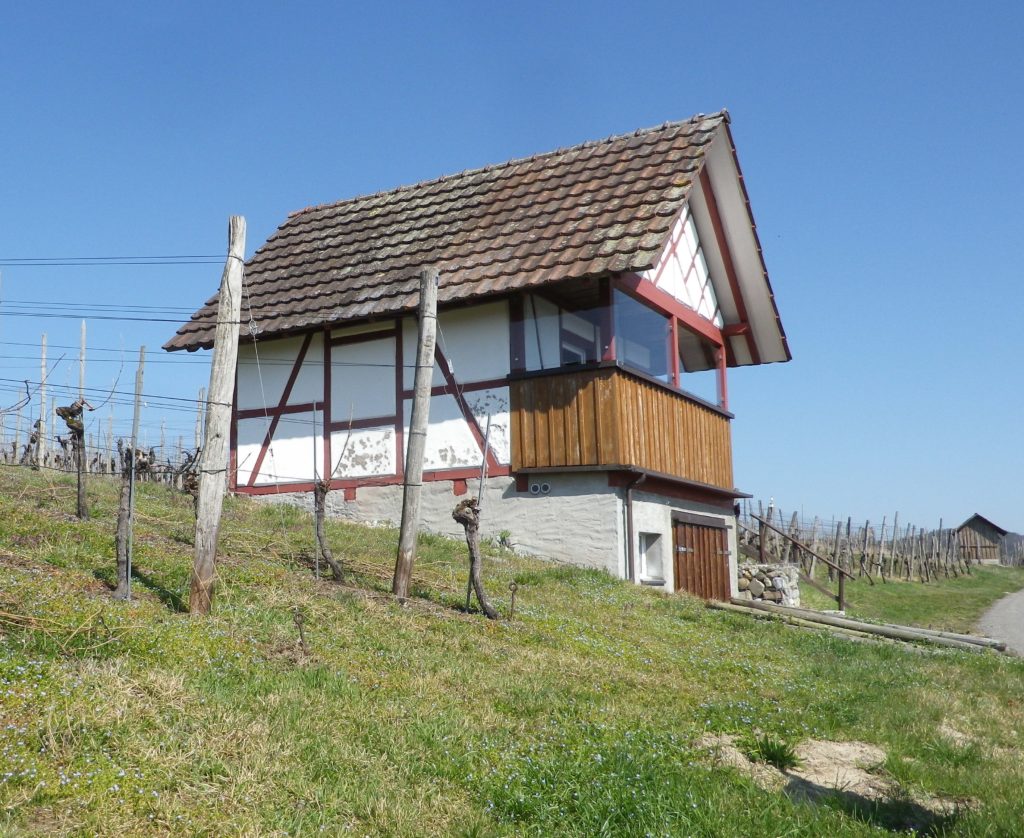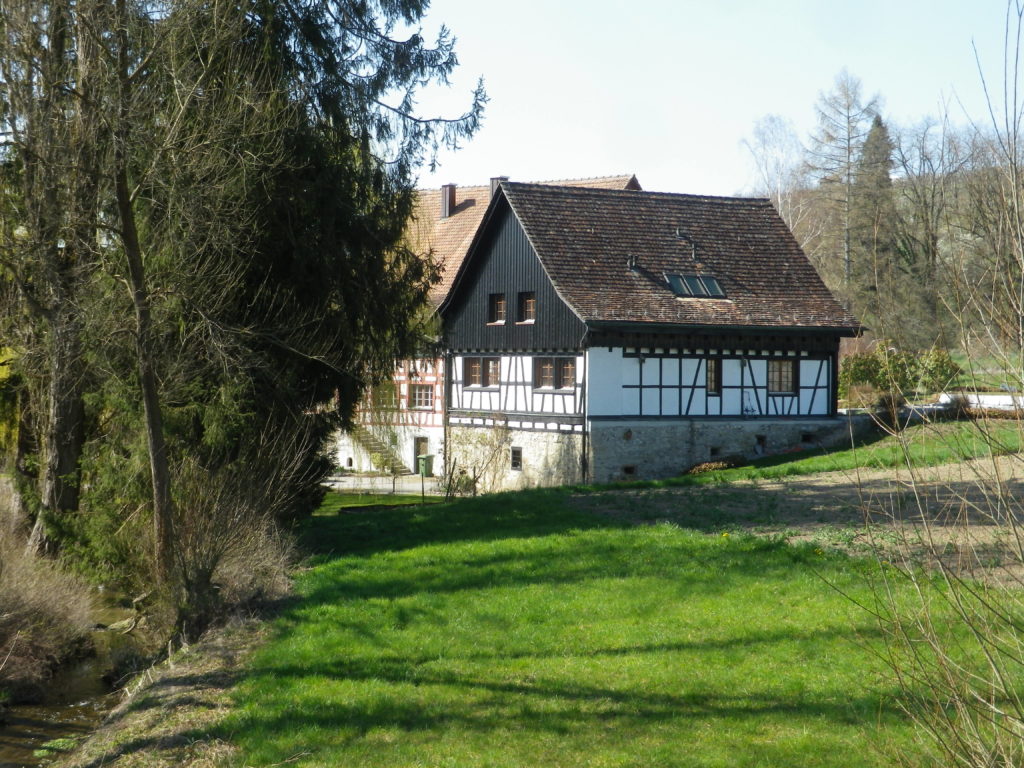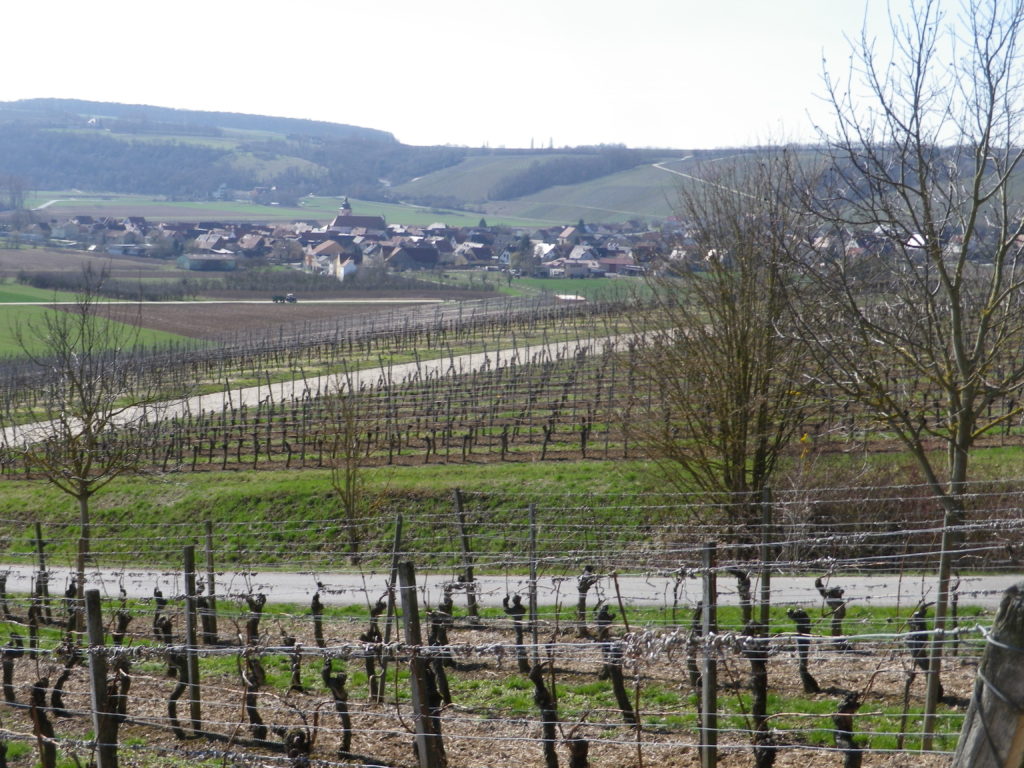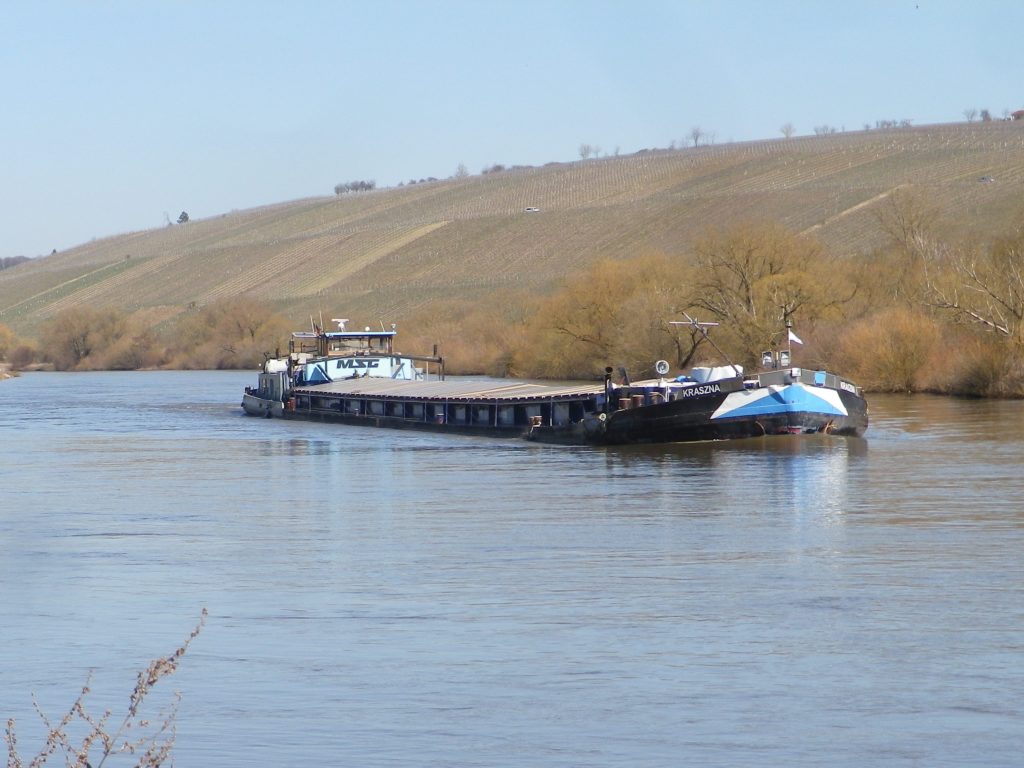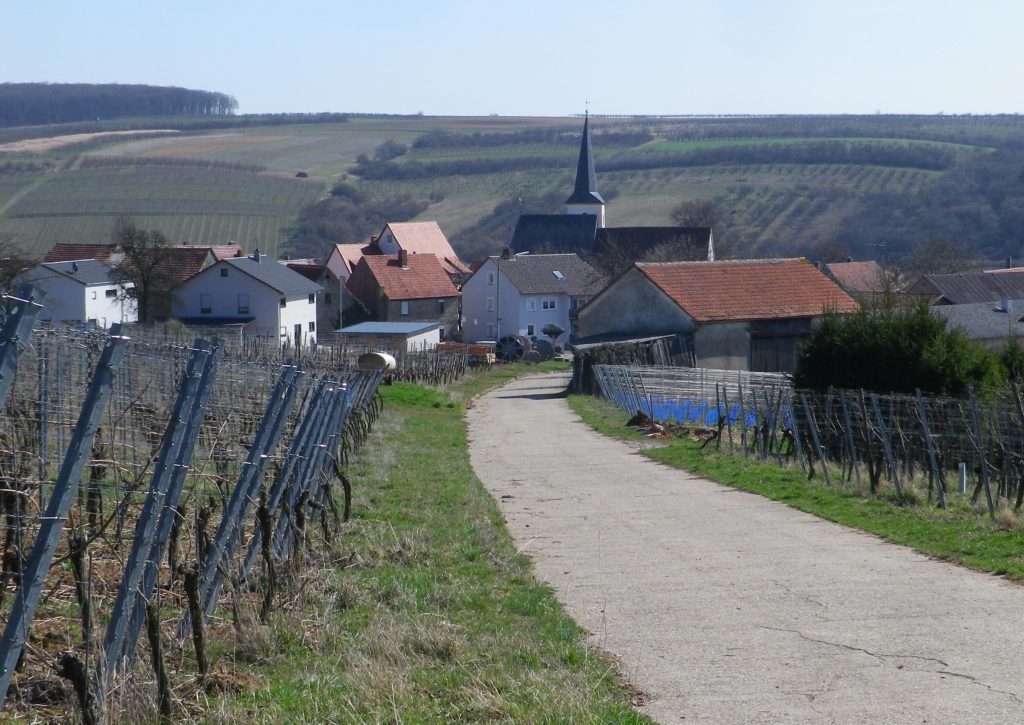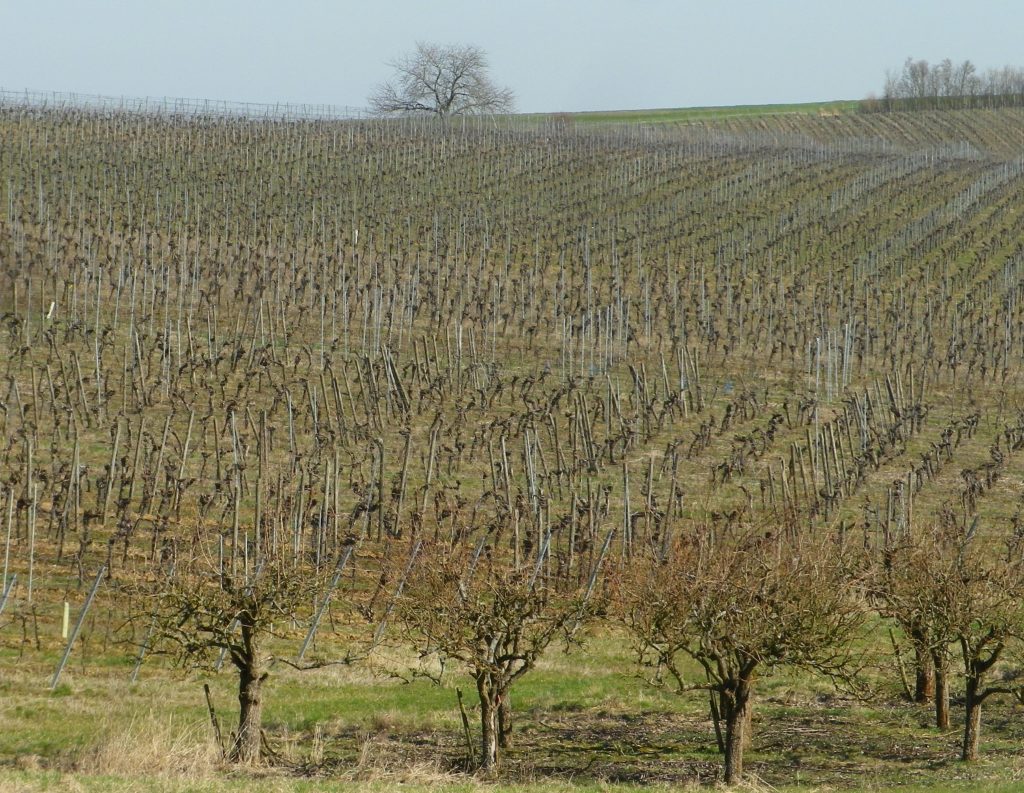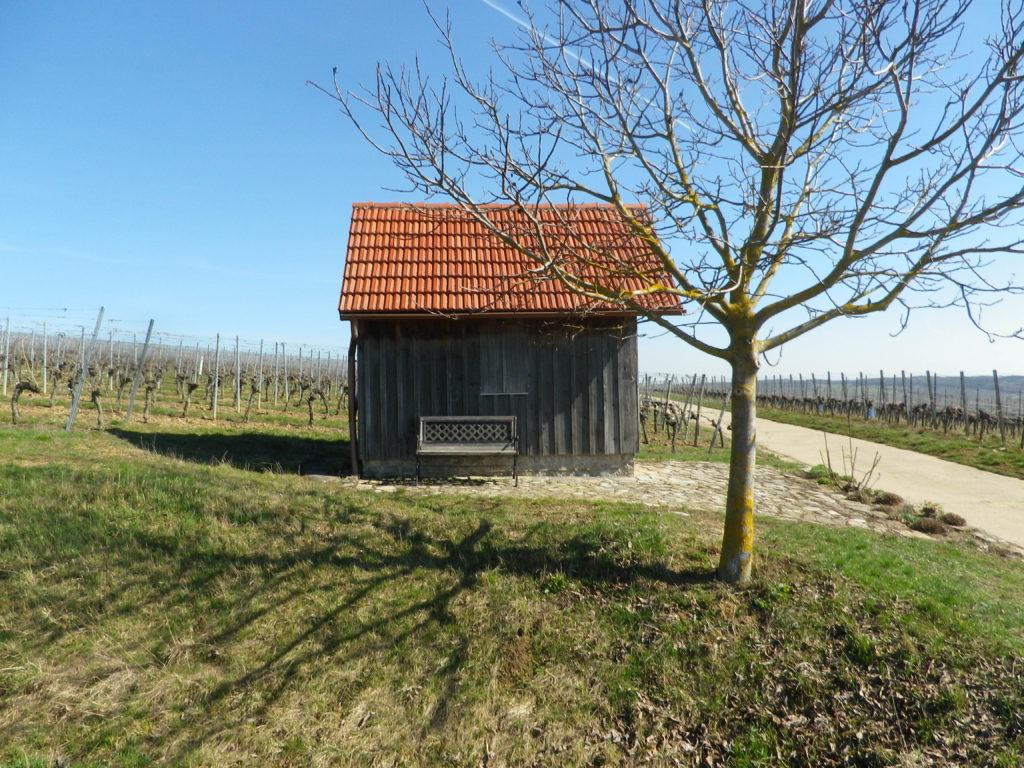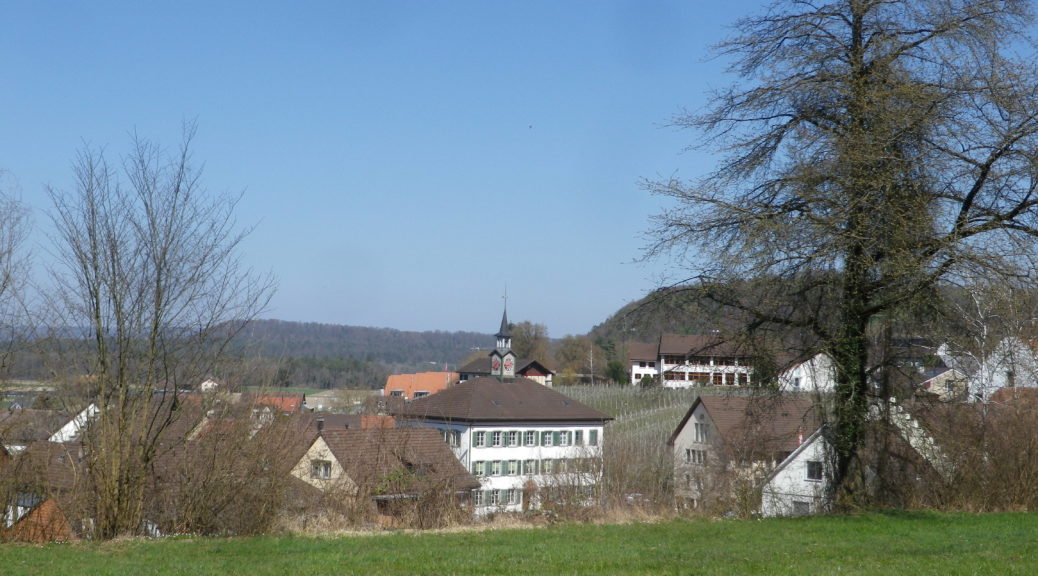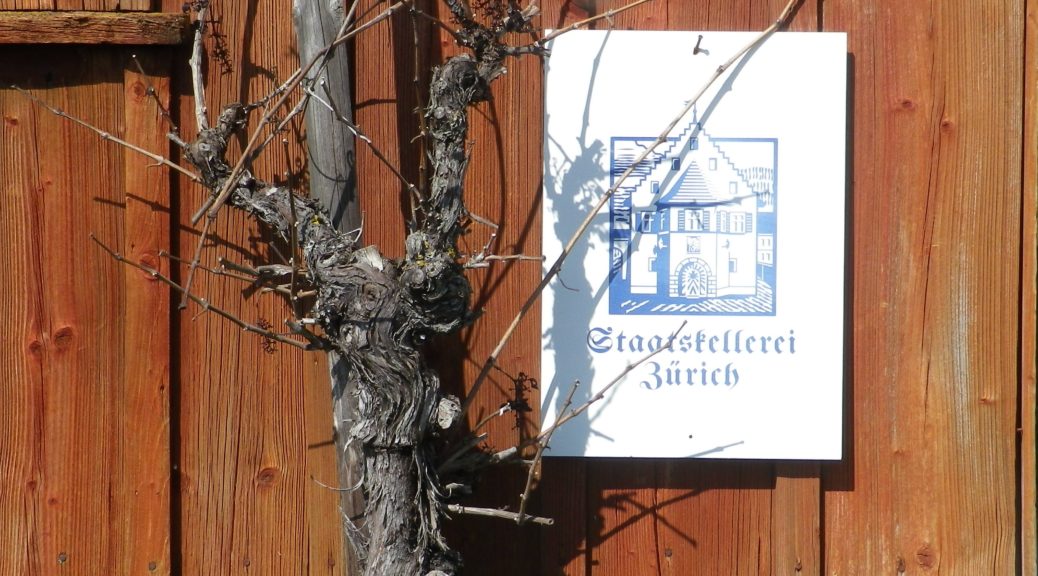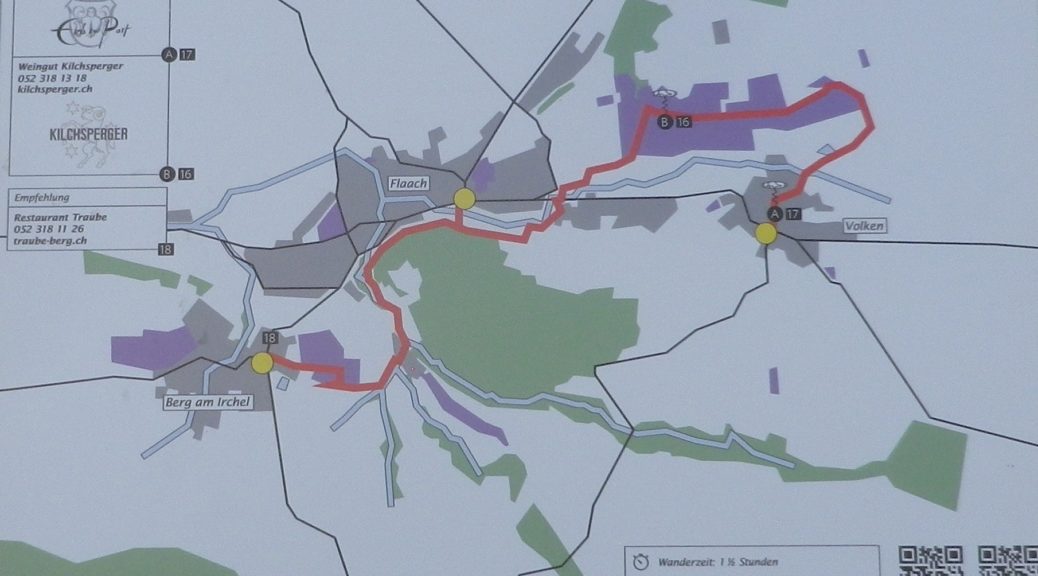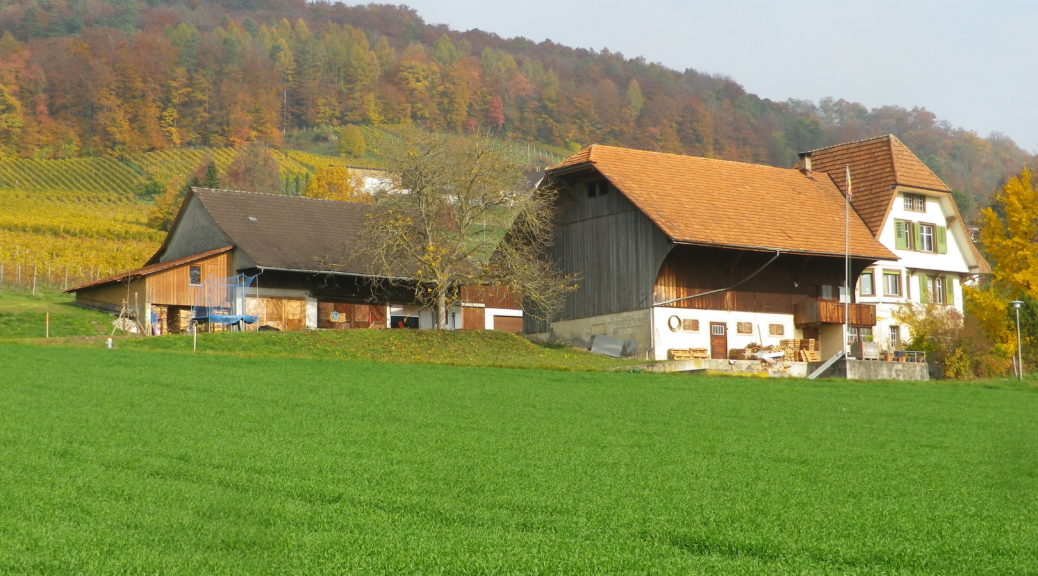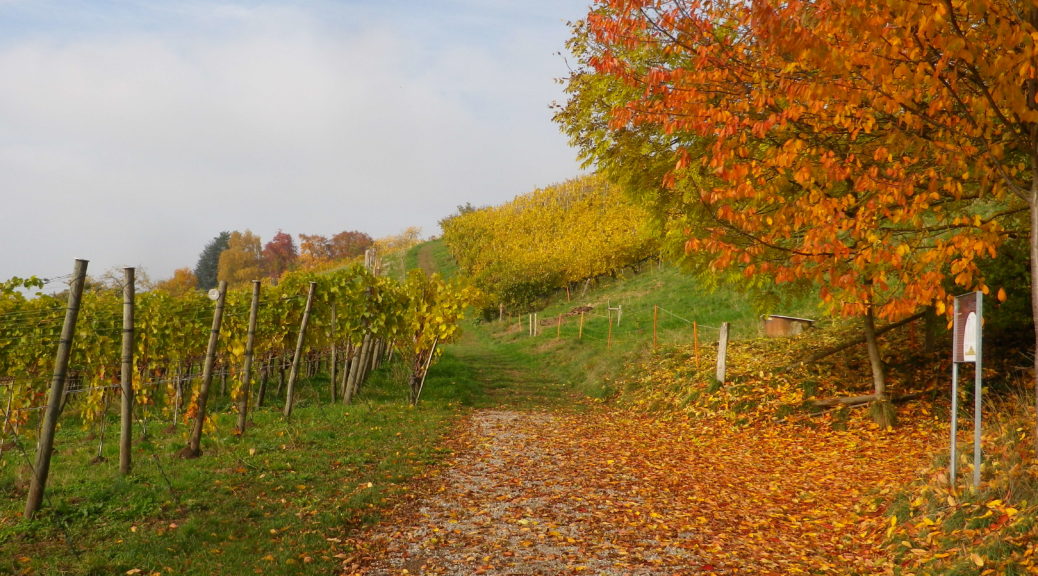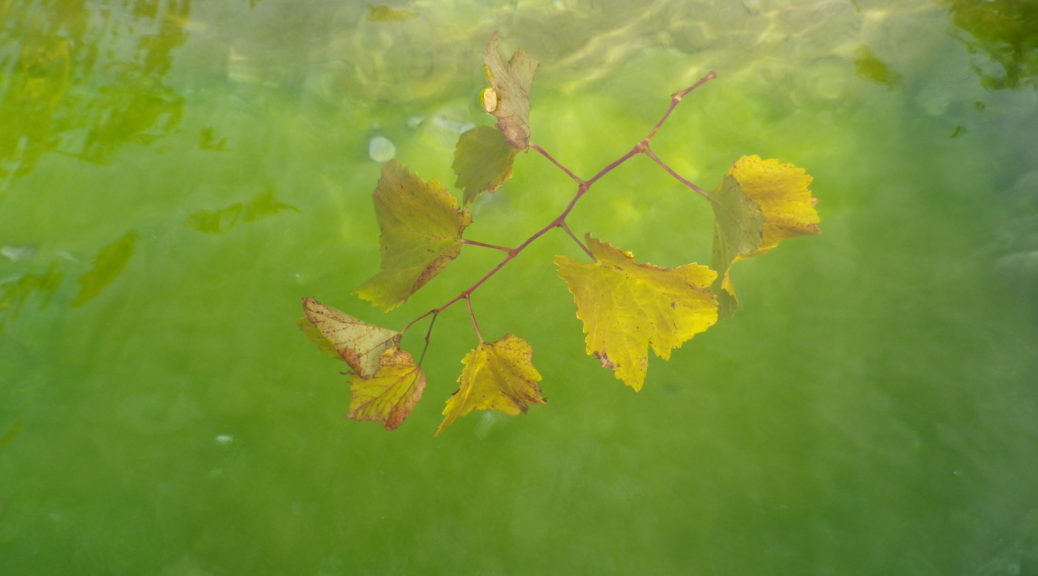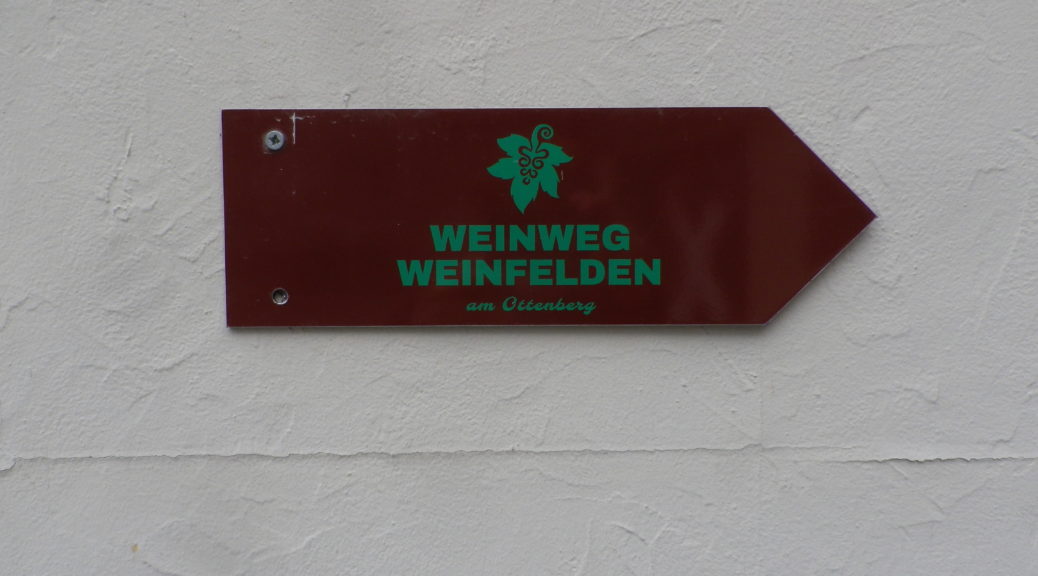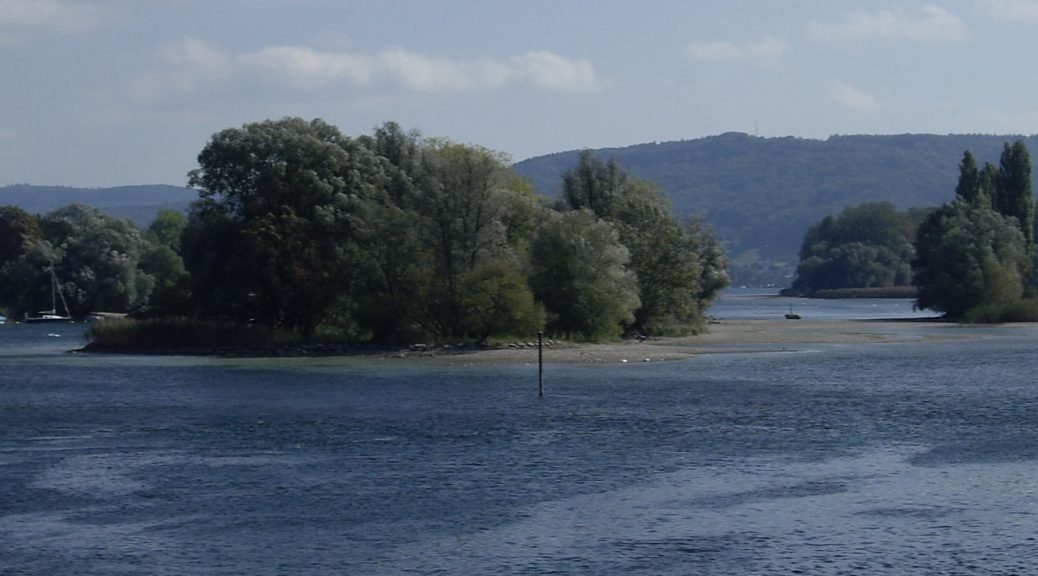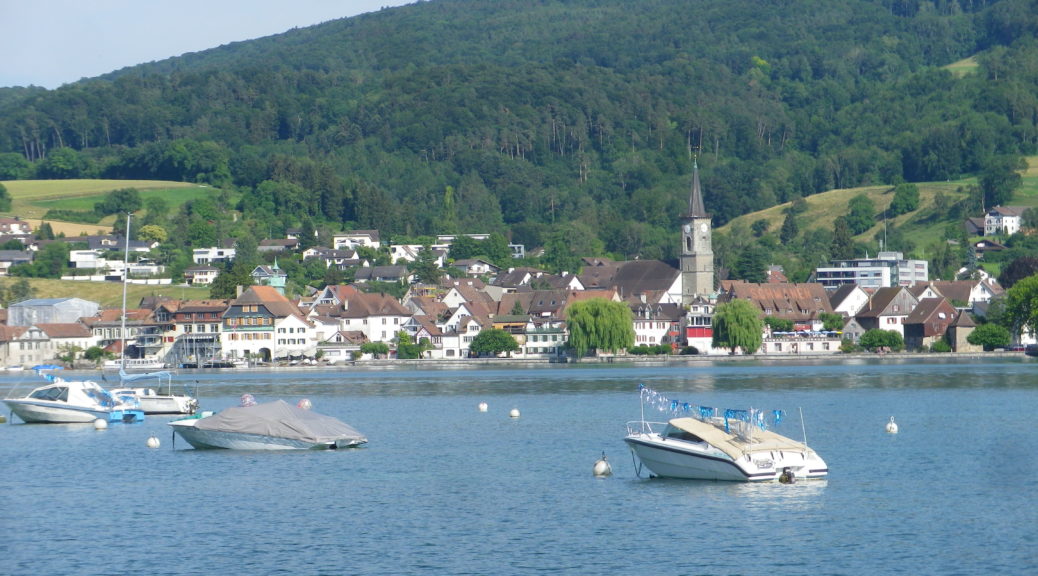Tag Archives: Switzerland
Worrenberg’s Wines and Vines
Zurich, Swiss financial capital with a major international airport and European travel hub, was not far away, as the map clearly showed. The occasional aircraft loomed overhead as a reminder. But otherwise, this corner of Switzerland was rural, peaceful and green – great characteristics for any hiking trail.
The Worrenberg Weinwanderweg trail route highlighted the vineyards and wines of three small villages. All villages were in the Canton of Zurich, but they were closer to Schaffhausen, the famous city of the Rheinfalls on the Rhine River. The high-point of the trail, literally and figuratively speaking, was the vineyard area known as the Worrenberg, a south-facing slope of sufficient steepness to make it ideal for planting vines in this area.
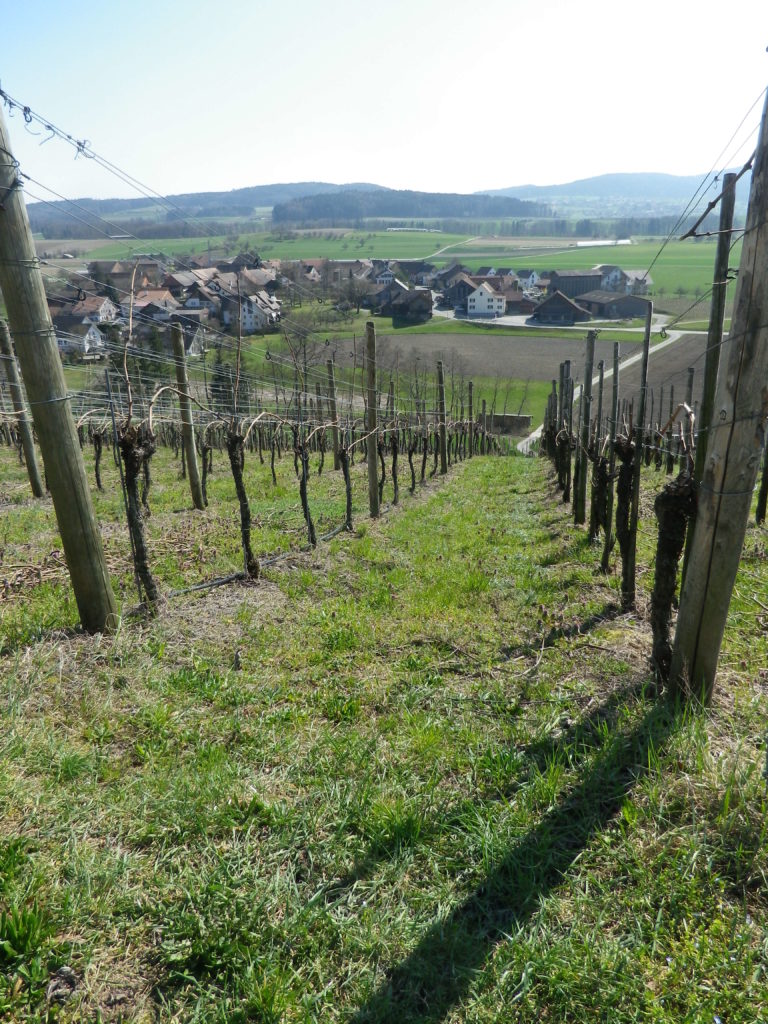
Zurich comes within what is known as the Deutsche Schweiz (German Switzerland), that part of Switzerland using German as its principle language. The Deutsche Schweiz has several different wine appellations, and in the region of Zurich, there is the Zuercher Weinland, a wine district not far from the wine region of Thurgau, centering around the Thur River, with the Rhine River to the west. It is a hilly region, not a mountainous one. Hence this short trail is an easy trail for families.
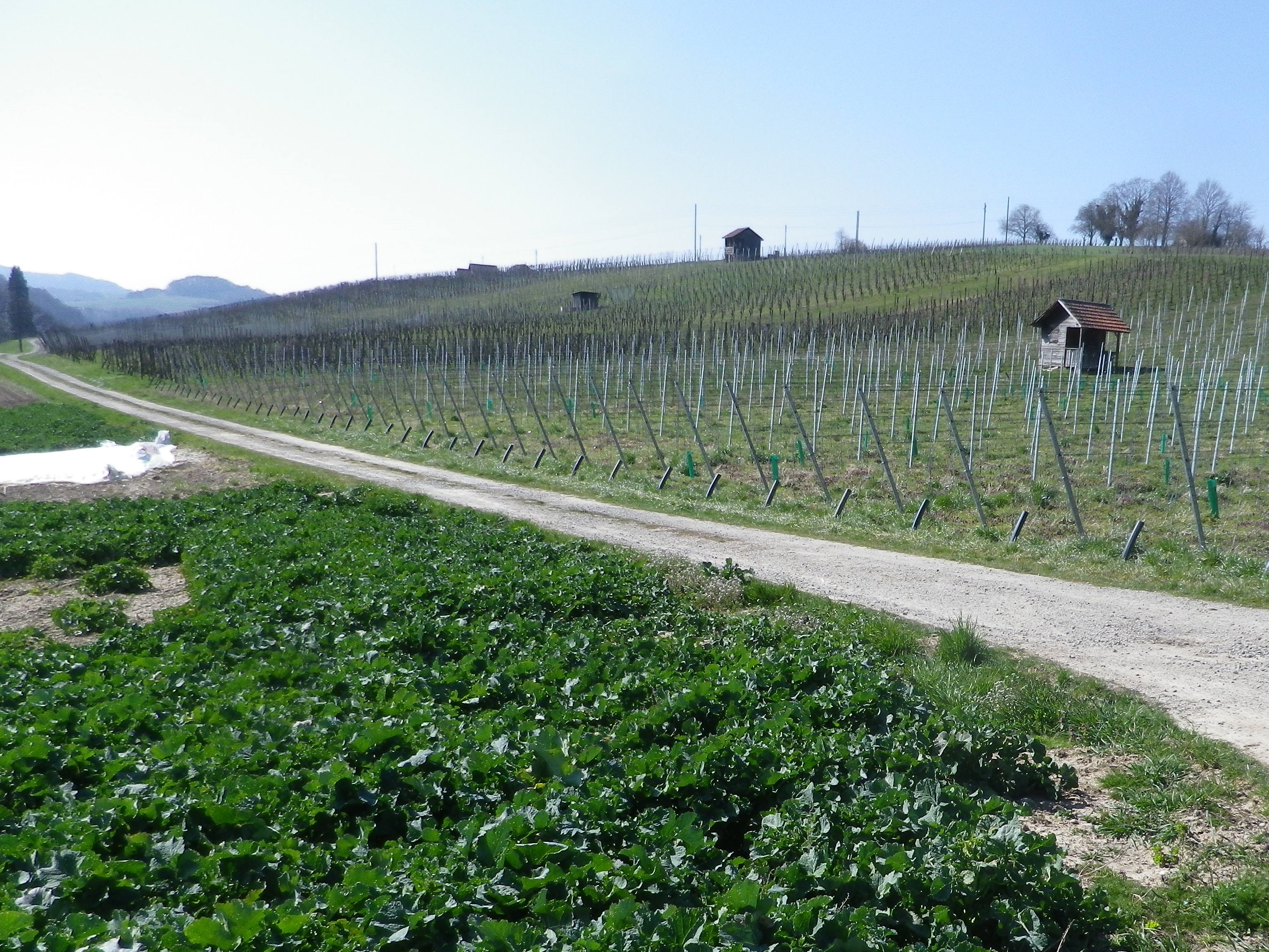
I began in the village of Berg am Irchel, which refers to the higher elevation south of the town. While there were a couple of wineries and a couple of taverns, it was difficult to see how people earned their livings. As I hiked along a couple of lanes, I passed a small “schloss”, a “palace” in name only, and soon entered the town’s small vineyard area.
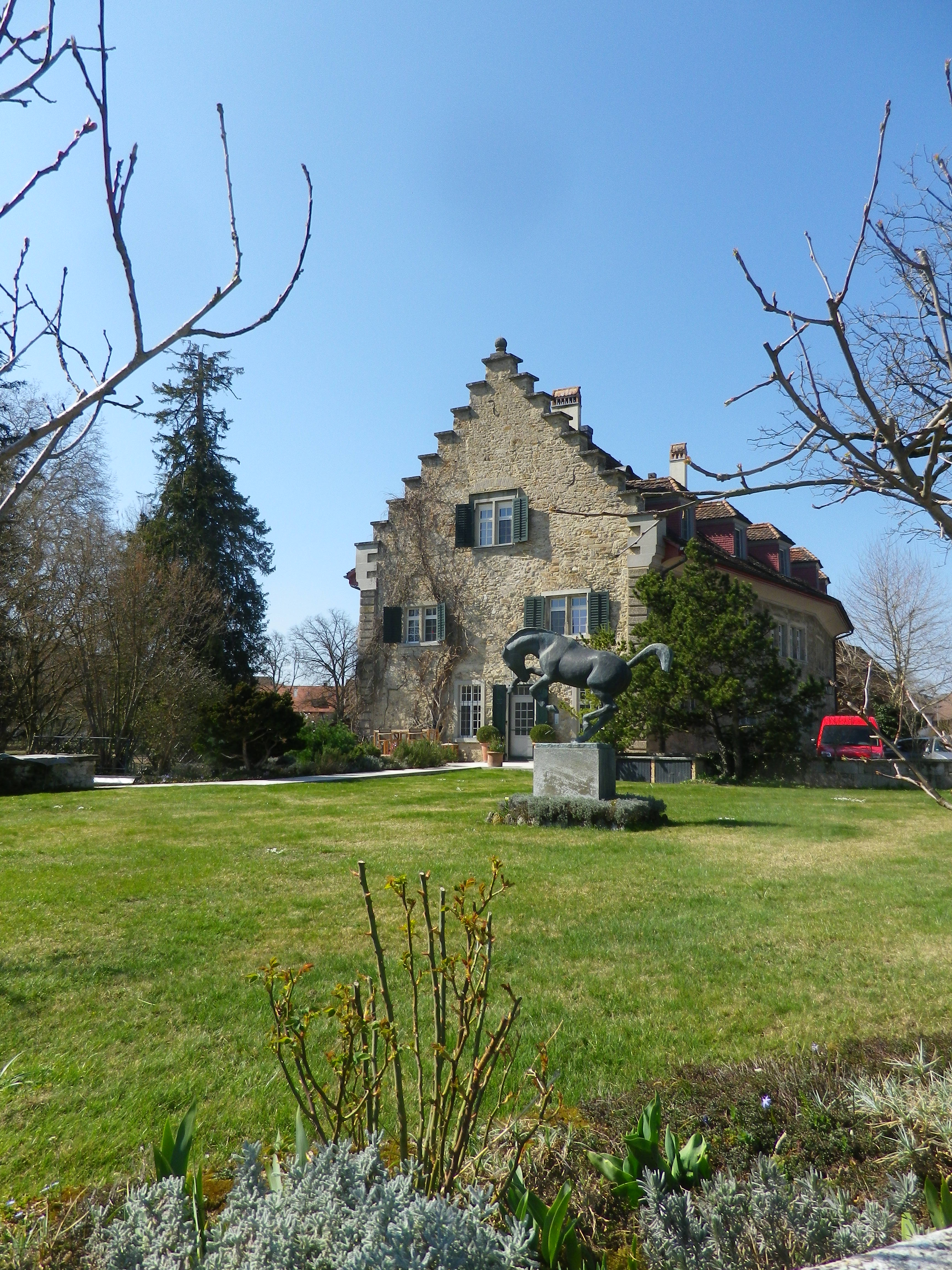
Once out of the vineyard area, the trail followed along a creek, shaded by old trees. The path led to Flaach, the second of the three villages, and the largest with almost 1300 residents. Nonetheless, I did not see a living soul as I meandered across the main street.
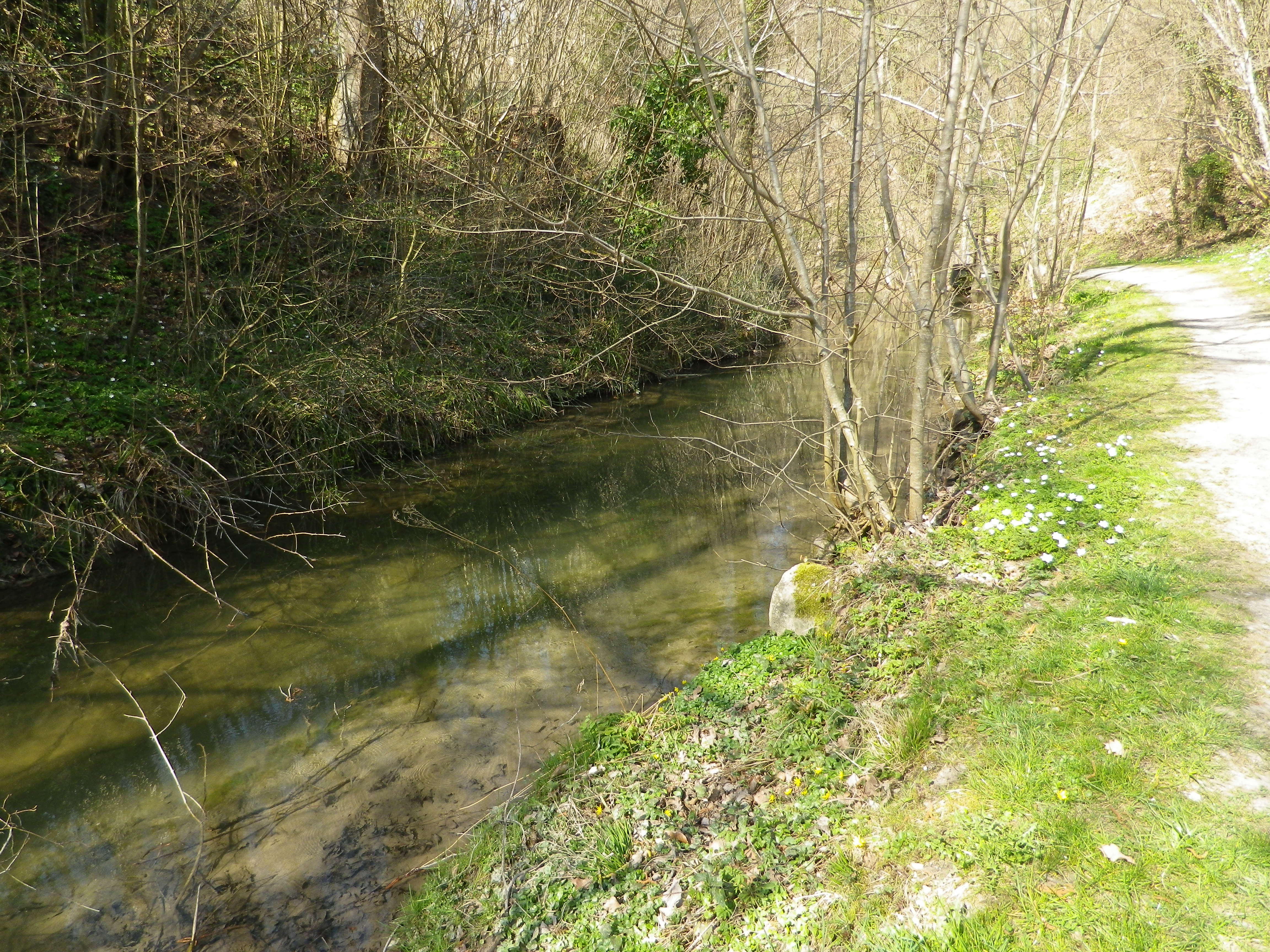
Leaving Flaach, winding up the side of the Worrenberg, were signs that provided information about viticulture and viniculture. The Worrenberg is the largest vineyard area in this district of the Zurich appellation, and several regional vintners had parcels here. A few vintner huts lined the way, including the one associated with the region’s largest winery: the Staatskellerei Zurich. Here and there, interesting perspectives on the villages and surrounding countryside appeared, to include the third village: Volken.
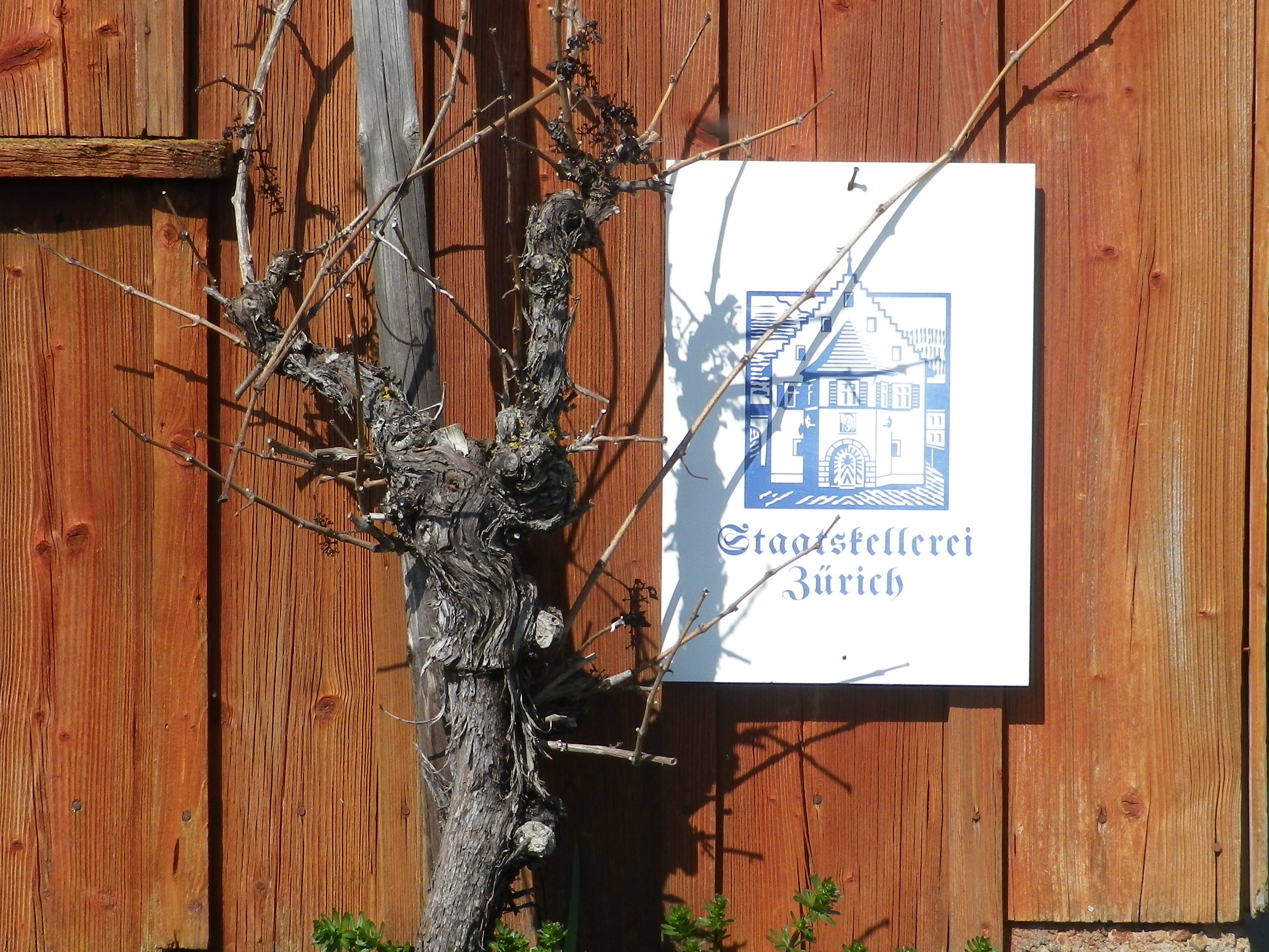
Soon I was walking along the deserted streets of Volken, past farmhouses and tidy Swiss residences. The center of town held a tavern, the Wirtschaft zur Post (closed), opposite a tiny grocery store conjoined with the Post Office. The warm greeting of the woman attending the store was enthusiastic and heartfelt. I imagine not many “foreigners”, let along locals, come in. But tiny or not, the store had a relatively large wine section, which luckily included local wines. And the one person I saw that day was an enthusiastic booster of the local wine industry. As she helped me choose the best selection of wines from local vintners, I realized that even when you think you are in barely inhabited countryside, you can always find somebody willing to talk about wine.
Wine Notes: Switzerland’s Zurich Appellation
What I Learned
Switzerland’s Zurich appellation is located behind the well-known Thurgau appellation on the shores of Lake Constance (Bodensee, in German), and the Sankt Gallen appellation to its east. It has five sub-districts, and clockwise, circling from north to south around the city of Zurich they are: the Zuercher Weinland, the Winterthurer Weinland, the Zuerichsee, the Limmattal, and the Unterland. Overall, the Zurich district is cooler, and more elevated than the vineyards in Thurgau, along the lake. Although fed by numerous rivers that feed into the Rhine, they are neither as large nor as temperature-moderating as the Rhine. The whole canton is covered by 613 hectares (1515 acres) of vineyard, according to the latest figures (2019). White varietals are less prominent (by approximately 2 to 3) than red ones, of which the Blauburgunder (Pinot Noir) features most prominently. It has a couple of interesting grape varietals, rare elsewhere.
Raeuschling, a white grape varietal, was well-known and highly cultivated in this part of Switzerland for several centuries. Like the Mueller-Thurgau grape that later replaced it, it was a varietal for cooler climates. It produces a crisp, acidic wine.
Gamaret, a cross between Gamay and Reichensteiner, is a red grape varietal first planted in the 1970s. Developed by Swiss scientists, its popularity originally spread quickly. In addition to the Zurich area, it grows in significant quantities as well as in the Vaud, Valais, Geneva and Ticino cantons.
What I Tasted
2015 Riesling-Sylvaner, Worrenberger, Erb zur Post, Halbtrocken, AOC Zurich, Weinbau Post (Volken): A dry white wine with medium gold color; a sharp, green apple and slight spice nose, with citrus, green apple and spice flavors; medium plus acidity, with a slightly acidic finish.
2015 Gamaret, AOC Zurich, Trocken, Weingut Bauer (Berg am Irchel): A dry red wine with dark minus purple red color; a tobacco, chocolate and leather nose, with vanilla, blackberry, chocolate and leather flavors; a complex and interesting varietal wine with high tannins (opened in August 2019).
2014 Pinot Noir, Worrenberger, Erb zur Post, Trocken, AOC Zurich, Weinbau Post (Volken): A dry red wine with medium ruby red color; a fruity nose with a hint of floral notes, and blackberry flavors, with a hint of floral honey; medium plus tannins, with a slightly acidic finish.
Worrenberg Weinwanderweg: Trail in a Nutshell
Trail Name: Worrenberg Weinwanderweg (AKA: Weinwanderweg am Worrenberg)
Trail Type: Short-distance trail; well-maintained and asphalt or hard-packed surfaces, marking on the trail is okay
Length:
Total – about 3 kilometers/almost 2 miles
Convenient to:
Schaffhausen or Zurich, Switzerland
Marking:
Yellow signs with stylized man in solid black, or “Weinwanderweg” in red letters on a white rectangular sign.
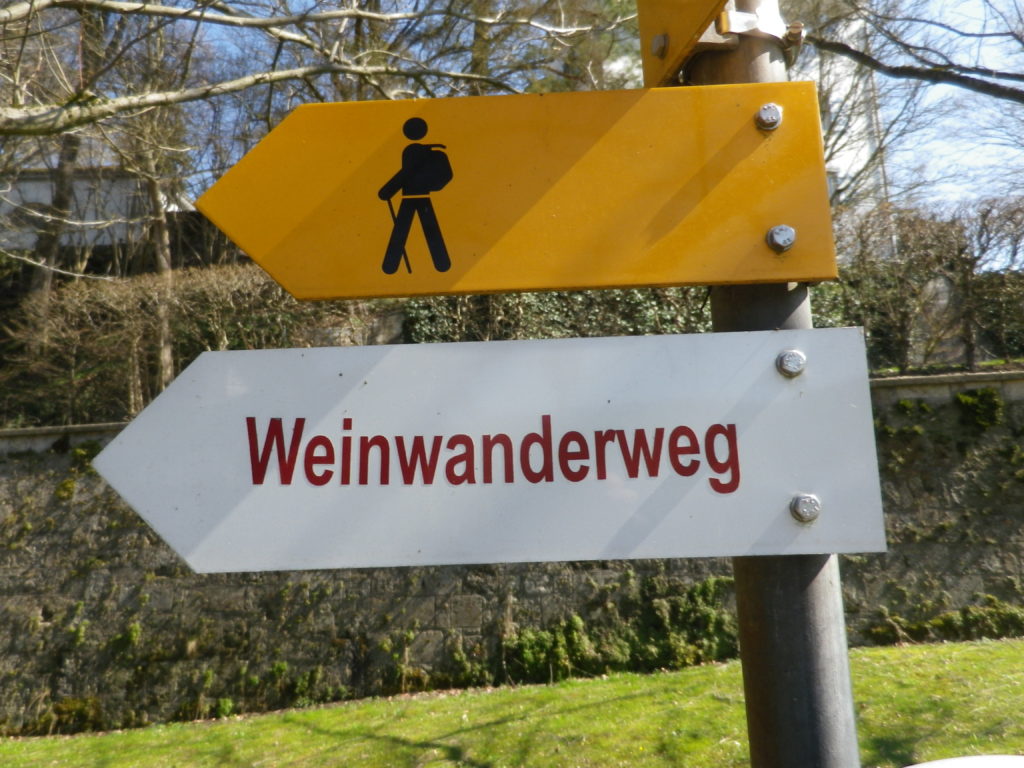
Trail Description: A very short and gentle hike through quiet, countryside, with vistas of rolling hills in the distance. Approximately one-quarter of the whole trail is shaded, as it passes through woods. The rest is in sun. Suitable for families with elementary-aged children, and very suitable for baby carriages (in all but a small section in the woods, where for less than 100 meters the going is a bit rougher) as well.
Trailheads:
Start: Berg am Irchel: Dorfstr
End: Volken: Flaachtalstr
Parking:
Parking spots are here and there along the lanes, and near fields on the outskirts of the villages.
Public Transportation Options:
Rail: The nearest station is in Andelfingen, with commuter service trains from Schaffhausen and Winterthur
Bus: The Swiss Postbus lines 670, 675 and 677 service these villages
Suggested Stages:
Not applicable
Trail Itinerary-Reference Points: (West-East)
Berg am Irchel: Dorfstr, Schlossstr, fields, along stream; Flaach: cross Oberdorfstr, Andelfingerstr, through vines on and up a slope; Volken: Glemettenstr, Flaachtalstr
Representative Trail Photos:
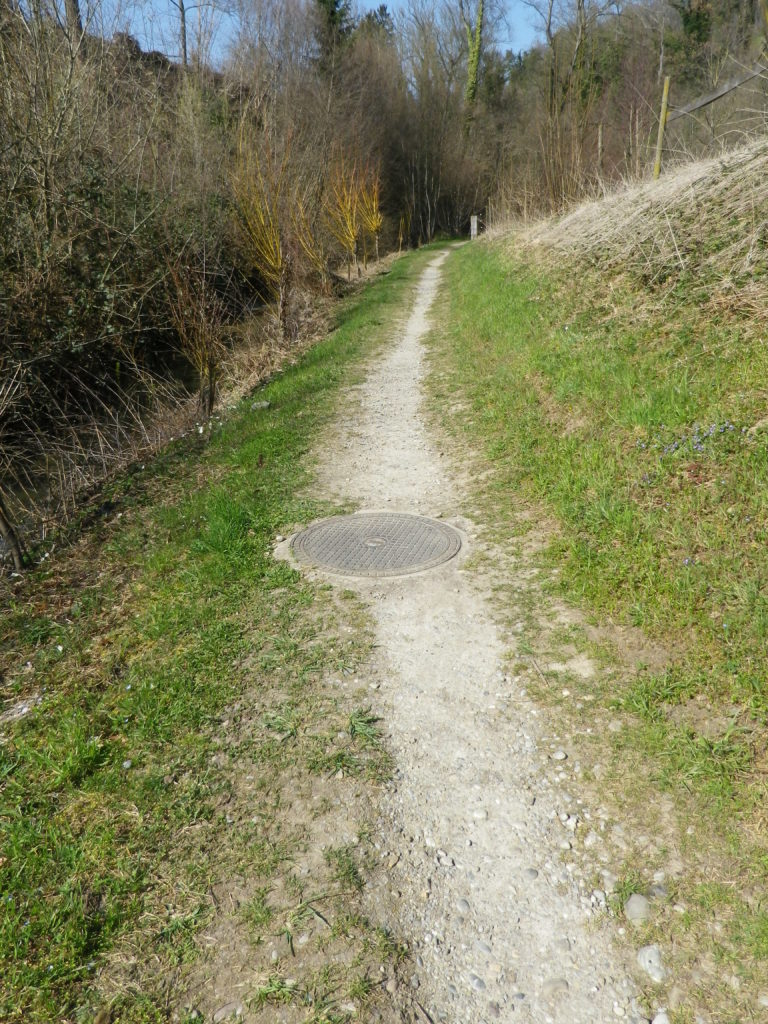
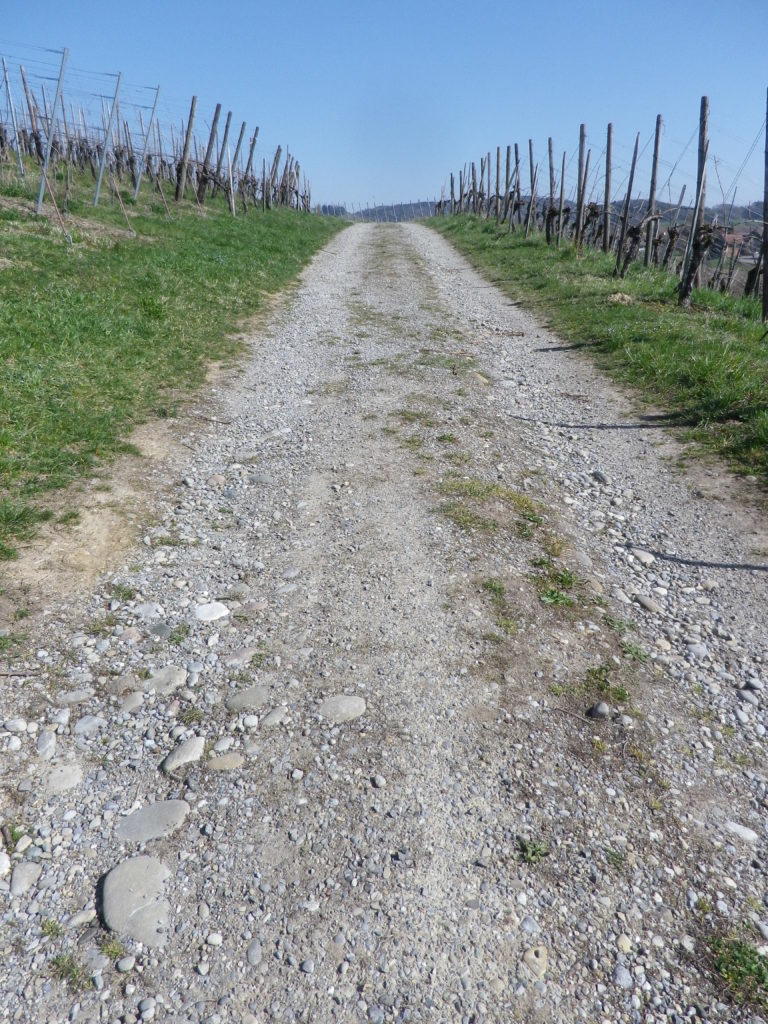
Restrooms: None observed
Attractions on or near Trail:
None observed
Tasting along the Trail:
Weingut Bauer in Berg am Irchel; Weingut Kilchsperger in Flaach; Weingut Zur Post (also a tavern) in Volken.
Alternative Options:
Hiking: Other hiking possibilities are available from local tourist offices/information points.
Biking:
-The 18 kilometer/11 milesWorrenberg-Thur bike tour follows from Flaach, over the Worrenberg, along the Thur River, then a bit along the Rhine River before returning to Flaach. Listed as medium plus difficulty.
-Part of the 90 kilometer-long Ostschweizer Weinroute (Wine Route), passes through Ossingen, about 10 km/6 miles away, on its way from Sankt Gallen to Schaffhausen, and the Rheinfalls.
Additional Information:
Regional: https://www.zuercher-weinland.ch/
Trail specific: http://www.worrenberg.net/Weinwanderweg/
Comments:
None
Gallery December 2019
Wine Fields Wandering
Weinfelden means wine fields in German, and in Switzerland, the Canton of Thurgau, there is a small town with this name. Not surprisingly, vineyards surround it, and the town’s hiking wine itinerary passes through them.
A promising start to any wine trail itinerary, surely. Additionally, this particular trail promised a wine education path, and diverse opportunities to sample wine along the way. So, making my way to the trailhead in the center of Weinfelden, set on the banks of the Thur River, I was intent on hiking the trail as well as learning about and tasting the local wines.
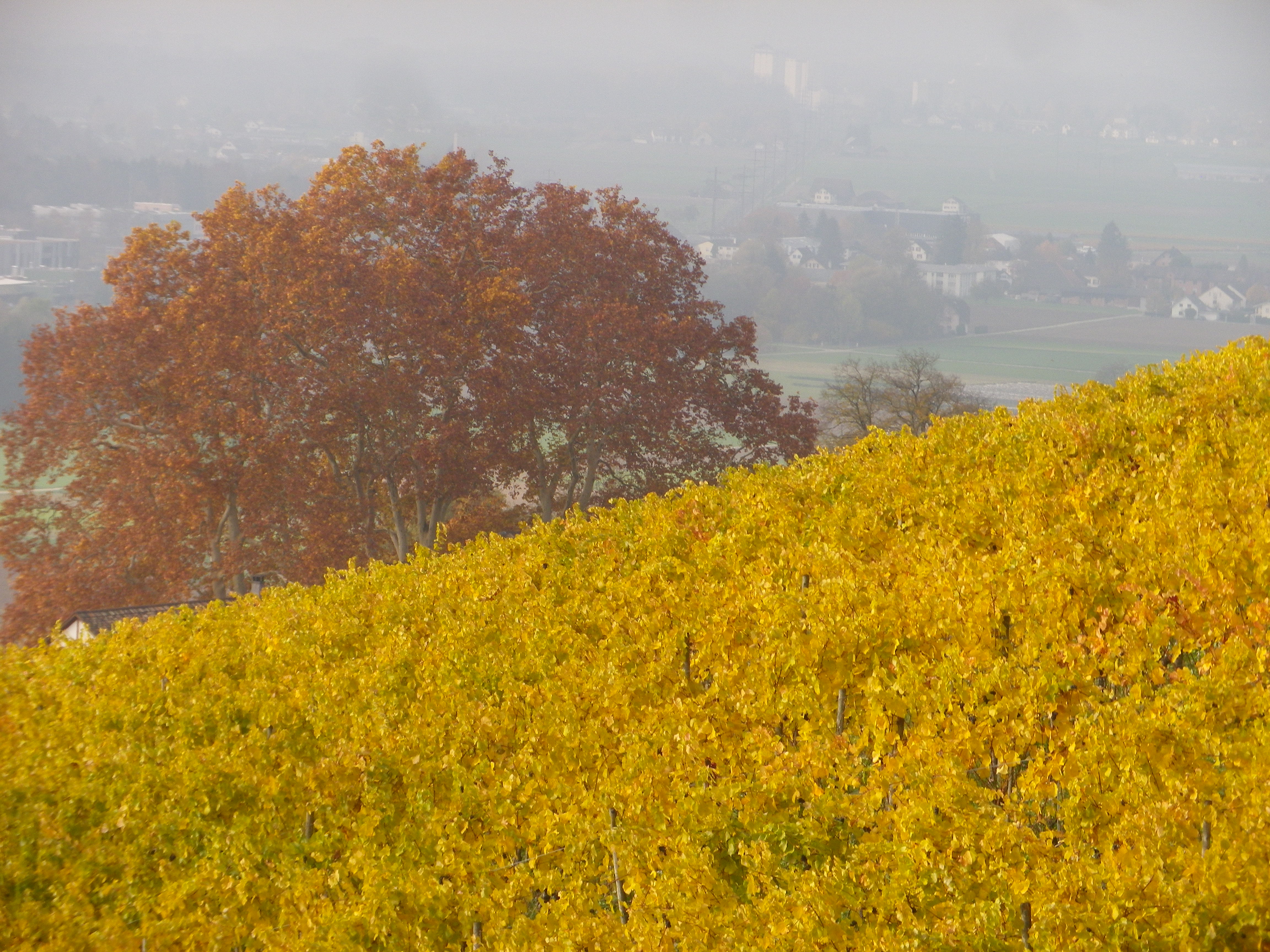
Wine Notes: Thurgau
What I Learned
The canton of Thurgau, in north central Switzerland, is a wine producing canton. For wine purposes, this canton has several different districts: The Upper Thur Valley, the Lower Thur Valley, Rhine, Lauchetal, Seebachtal, and Untersee. Its northern most section, the Untersee faces onto Lake Constance and the High Rhine. Much of the rest of the canton wine production lies in the valley of the Thur River, a tributary to the Rhine, from which the canton gets its name.
Weinfelden Weinweg: Trail in a Nutshell
Trail Name: Weinfelden Weinweg
Trail Type: A short distance circuit; well-maintained and almost exclusively paved, good marking on the trail
Length:
Total – 9 kilometers/6 miles
Convenient to: St Gallen, Switzerland; Konstanz, Germany
Marking: Burgundy colored metal arrow, with green grape leaf and trail name letters. See featured photo above.
Gallery October 2019
Bodensee Biking
The Bodensee (Lake Constance, in English) means fantastic cycling! Any wine-drinking fan of biking excursions in Europe should definitely cycle the Bodensee Radweg (Lake Constance Bike Trail) to experience the trail that German, Austrian and Swiss nationals have raved about for years, and to experience the great regional wines as well!
Following the shores of this lake, mostly on dedicated biking paths, the 260-kilometer-long Bodensee Radweg passes in and out of three countries: Germany, Austria and Switzerland, and through or along vineyards in Germany and Switzerland. (There is even one to see just outside Bregenz, in the Vorarlberg region of Austria.) It is a circuit, which means you can begin at any convenient spot along the trail.
